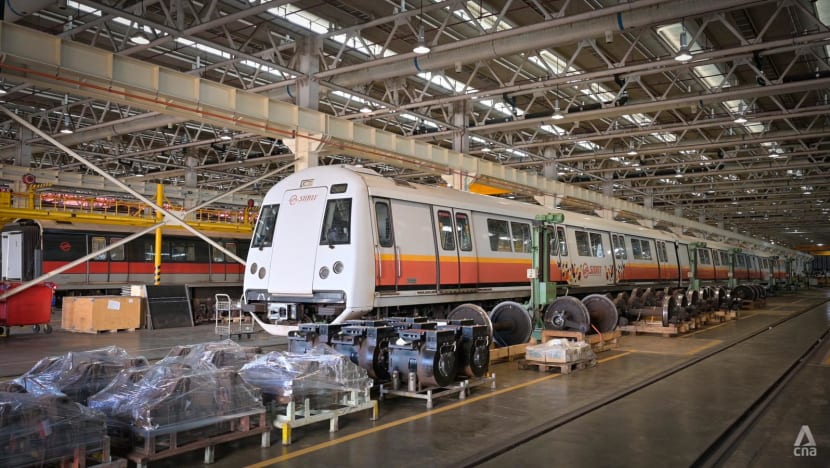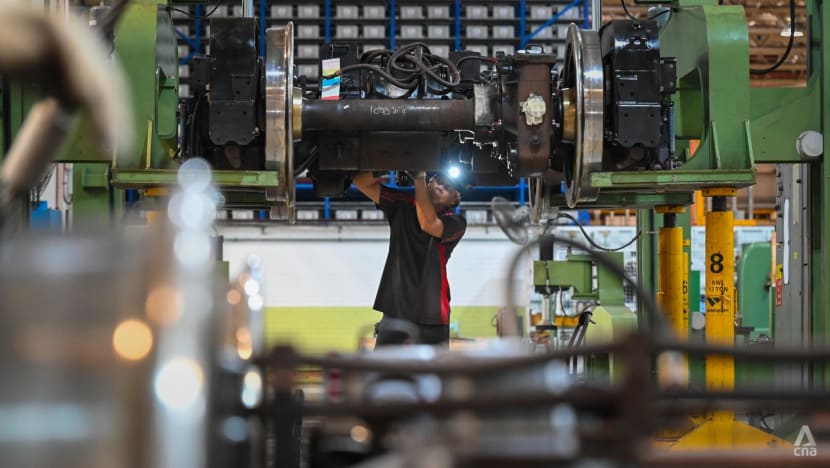The night shift that keeps Singapore's trains running
While most of Singapore sleeps, SMRT's maintenance team is hard at work. On Mar 11, the media got a behind-the-scenes look at what keeps trains moving.
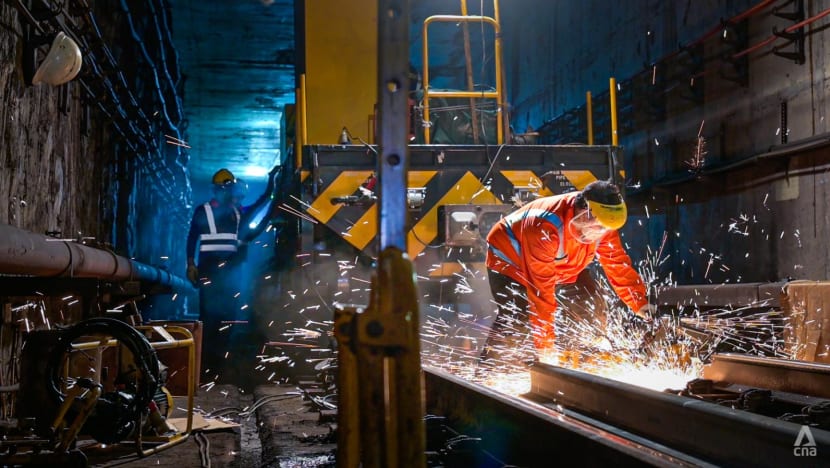
Rail replacement works were done between 1.30am and 4.30am on a 18m piece of defective rail where a chip had been spotted on the base of the rail, called the rail foot. (Photo: CNA/Syamil Sapari)

This audio is generated by an AI tool.
SINGAPORE: While most of Singapore sleeps, a rail maintenance team works through the night to ensure trains are ready to run at the crack of dawn.
Despite the demanding work environment – from tight time constraints to harsh conditions – the SMRT crew remains committed.
Mr Low Choon Keong, SMRT's director of rolling stock, hopes the public understands the challenges and limitations that make rail maintenance particularly tough.
To see firsthand how demanding the work can be, members of the media joined the SMRT maintenance team during an overnight rail replacement on Mar 11.
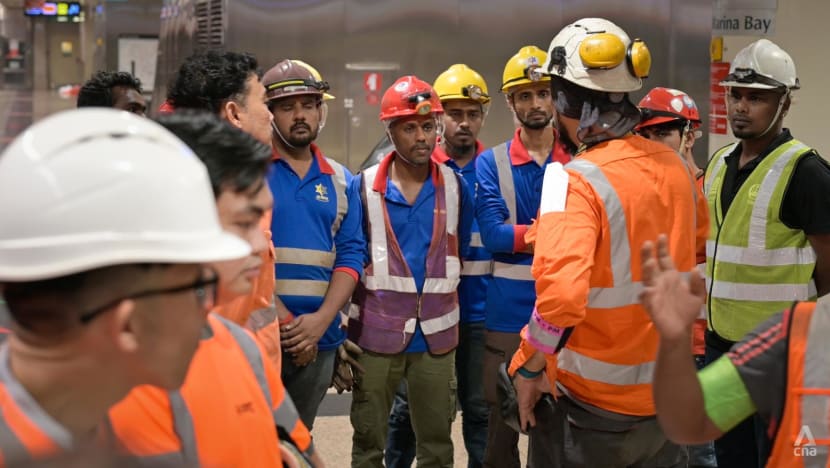
REPLACING RAILS IN THE DEAD OF NIGHT
At 1am, workers assembled at Marina Bay station to replace an 18m stretch of rail with a chip in its base.
The team has to move quickly – they only have a narrow three-hour window between 1.30am and 4.30am to get the job done. This gives enough buffer time after the last train and before the first train gets on the tracks.
A diesel-powered locomotive brought in the new rail and equipment, while workers walked 400m into the tunnel to the site.
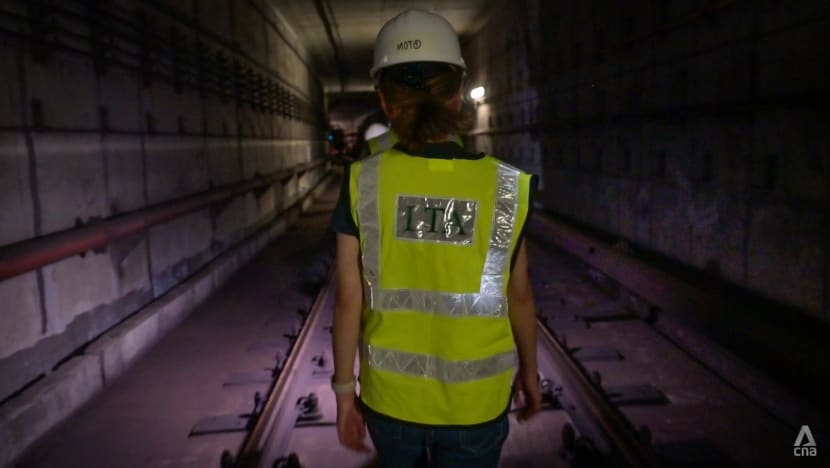
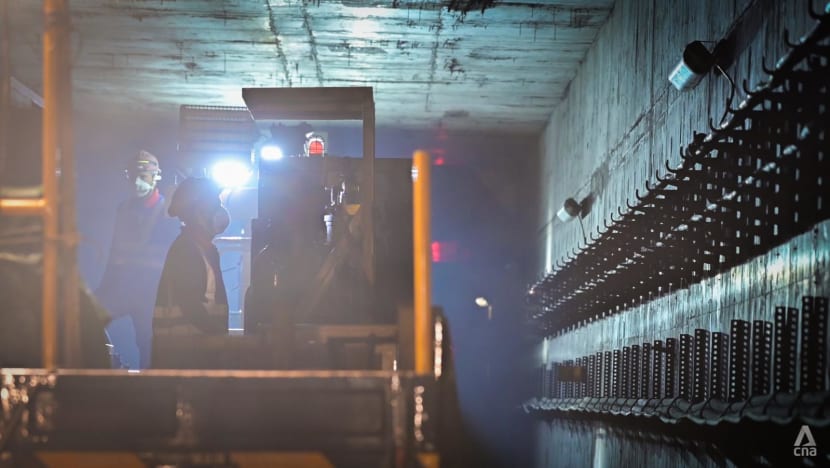
Sparks flew as the damaged rail was sawed out. A rail changer lifted it out and lowered the new, one-ton rail into place. After alignment, teams welded the ends using thermic welding and smoothened the joints by grinding, so that trains can pass safely over the tracks.
The sense of urgency among the workers was almost palpable.
The team of 14 that was hard at work is not the only one - there are about five such teams, comprising between 12 to 18 workers each, replacing worn or defective rails along the North-South and East-West Line each night.
With 400km of rails on both train lines, such replacement work is an everyday affair - as long as trains keep running.
Through the entire rail replacement process, the movements of the workers were quick and decisive. Some ran back and forth to communicate and grab different tools to complete their tasks.
Manager of track renewal at SMRT, Mr Shazni Jaffar, said that with a short three-hour window, time is of the essence.
“How do we manage it? We have strict procedures in place to make sure that our works are carried out safely and of course, timely, so that the revenue service will not be delayed,” he said.
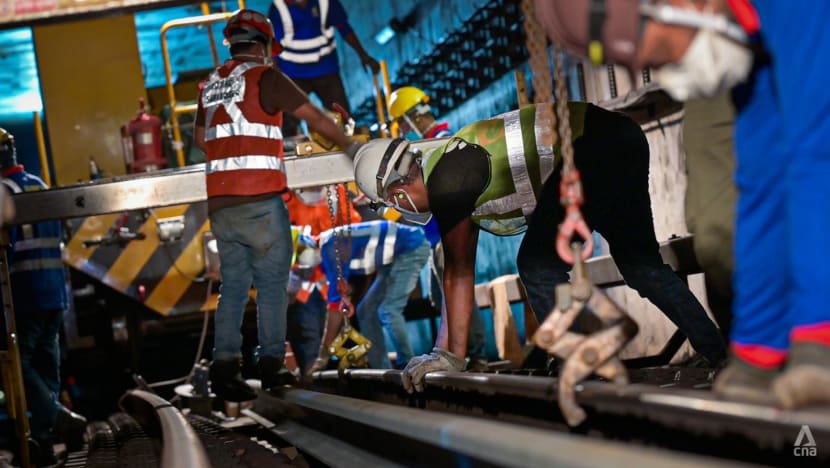

How are defects spotted?
This is the job of patrollers, who manually scan sectors of tracks both underground and above ground in three-, four-, or seven-day cycles.
Armed with tools such as a torchlight and mirror, they patrol 4km to 5km stretches of tracks a night in pairs, also within the hours of 1.30am to 4.30am.
There are also heavy machines that use ultrasound to detect cracks and other defects on the tracks. However, some rail chips, such as the one being repaired on Mar 11, cannot be detected by the machine as it is at the base of the rail.
That is where the experienced eyes of a patroller are needed.
MAINTENANCE OF TRAINS
The work does not end with the rails. At Bishan depot, overhauls are conducted on the 144 trains on the North-South and East-West Lines. These overhauls are done on each train every four to five years based on utilisation.
Components like couplers – which connect and stabilise train cars – and bogies, or the wheel assemblies, are dismantled, inspected and tested.
The overhaul of the bogie includes a check for deformations on the bogie frame, as well as the replacement of defective wheels if necessary.
During last September's disruption that led to a six-day service halt on the East-West Line between Jurong East and Buona Vista stations, a defective axle box fell onto the tracks, causing a bogie to derail between Dover and Clementi stations.
